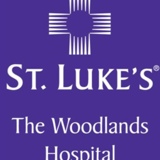Title Page
-
Site conducted
- MH
- WSH
- RH
- CSH
- NNI
- KSHC
- CCC
- CCNA
- ORNA
- ERNA
- ACNA (OPD)
- NASA
-
Unit
- REIMD
- WSH ED
- URO-GYNE
- WARD 1
- WARD 2
- WARD 3
- WARD 4
- GYNE-ONCO
- NURSERY
- L&D
-
Unit
-
Unit
- Adult Endoscopy
- OHIPC
- Adult Renal Dialysis
- MW8
- MW7
- MW6
- MW5
- Male Surgical Ward
- Female Surgical Ward
- Surgical Ward 5
-
Unit
- CCU
- CARDIAC WARD 1
- CARDIAC WARD 2
- CARDIAC TELEMTRY WARD
- CARDIAC SURGICAL WARD
- NON-INVASIVE LAB
- ACCL
- PCCL
- PEDIATRIC CARDIAC WARD / PHDU
-
Unit
- Pediatric Endoscopy
- 2FW1
- 3FW1
- 3FW2
- 3FW3
- 3FW4
- 4FW1
- 4FW2
- PSRU
-
Unit
-
Unit
-
Unit
-
Unit
-
Unit
-
Unit
-
Unit
-
Conducted on
-
Prepared by
Crash Cart Audit Findings
Crash Cart Files
-
Crash cart folder available, complete and updated with files arranged in accordance to the KFMC Crash Cart policy.
-
Specimen signature log of all staff in the unit allocated to check the crash cart is complete and up-to-date.
-
Completed checklists and test strips are kept in the folder for a period of one week – old checklists (3 months) are kept in the unit manager’s office
-
Crash cart equipment checked once per shift using the appropriate trolley checklist - documentation of crash cart checking complete and kept in crash cart folder (once per day for areas that do not operate 24 hours/day) – per shift for outside contents and per month of all crash cart items
-
For items in the checklist marked as (x), the staff’s ID, signature and the date is documented together with the corrective action to be taken on the crash cart report
-
Crash cart deficiencies are entered in the Crash cart deficiency report – all deficiencies not resolved within 24 hours should be reported through datix
General Crash Cart Inspection
-
Crash cart is in place and accessible.
-
Crash cart is locked with the number of the lock recorded on the checklist per checking – integrity of lock checked
-
Drawers are properly labeled (airway, drugs, breathing, circulation)
-
Crash cart is clean and functional – PPM up-to-date.
Crash Cart Equipment Checking
-
Defibrillator available, clean and disinfected - functionality checked in accordance with the operator’s manual – PPM up-to-date
-
Defibrillator plugged into an emergency power source.
-
Defibrillator cables are connected to the paddles
-
Portable suction machine available, functionality checked – plugged into emergency power source – PPM up-to-date
-
Oxygen cylinders checked – have at least 1000 psi
-
Resuscitation bag connected to oxygen cylinder’s flow meter using clean oxygen tubing – resuscitation bag connected to a mask
Crash Cart Content Checking
-
All crash cart items are checked for the integrity of their packaging and expiration date
-
No expiring items within the next month
-
All crash cart items are placed in their correct drawer
-
Laryngoscope (functionality) is checked once per month – with spare battery – expiration date of battery checked
-
Medication tray checked by pharmacist once a month – documented in crash cart checklist
-
Crash cart locks are locked in a cupboard separate to the crash cart








